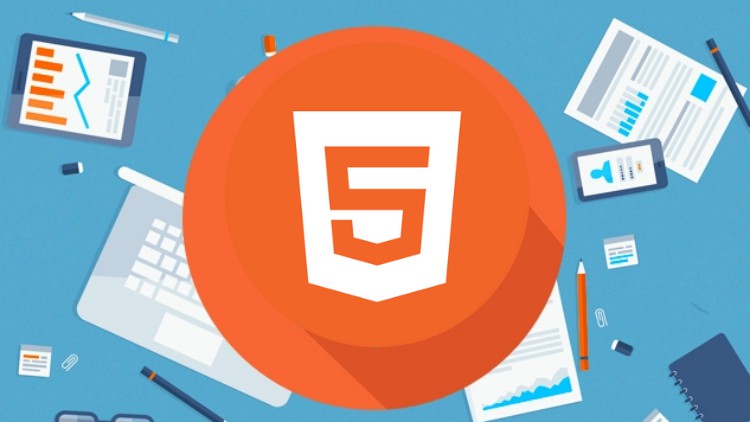
A Complete HTML5 Programming Course for Beginners
☑ HTML5 Basics for begginers
☑ New Elements of HTML5
☑ Write HTML Code
☑ You will be able to use features like Drag and Drop, Geo location and Web Storage to create immersible user experience
HTML5 is really awesome. Today it is widely used on internet. Most of latest browser supports HTML 5 standards. It provides feature like animation on webpage and many more.
HTML5 includes detailed processing models to encourage more interoperable implementations; it extends, improves, and rationalizes the markup available for documents and introduces markup and application programming interfaces (APIs) for complex web applications. For the same reasons, HTML5 is also a candidate for cross-platform mobile applications because it includes features designed with low-powered devices in mind.
Many new syntactic features are included. To natively include and handle multimedia and graphical content, the new <video>, <audio> and <canvas> elements were added, and support for scalable vector graphics (SVG) content and MathML for mathematical formulas was also added. To enrich the semantic content of documents, new page structure elements such as <main>, <section>, <article>, <header>, <footer>, <aside>, <nav>, and <figure> are added. New attributes were introduced, some elements and attributes were removed, and others such as <a>, <cite>, and <menu> were changed, redefined, or standardized. The APIs and Document Object Model (DOM) are now fundamental parts of the HTML5 specification, and HTML5 also better defines the processing for any invalid documents.
Some technologies that were originally defined in HTML 5 itself are now defined in separate specifications:
- HTML Working Group – HTML Canvas 2D Context;
- Web Apps Working Group – Web Messaging, Web workers, Web storage, WebSocket, Server-sent events, Web Components[79] (this was not part of HTML 5, though); the Web Applications Working Group was closed in October 2015 and its deliverables transferred to the Web Platform Working Group (WPWG).
- IETF HyBi Working Group – WebSocket Protocol;
- WebRTC Working Group – WebRTC;
- Web Media Text Tracks Community Group – WebVTT.
English
Language
HTML 5
Introduction to HTML 5
New Elements
Canvas
SVG
Drag
Geolocation
Video
Audio
Input
Form
Attribute
Storage
Cache
Web worker
SSE